Last Question For Now: How Do I Get Dates To Show Up On My Posts? I Don’t Like Everything Being Undated.
Last question for now: How do I get dates to show up on my posts? I don’t like everything being undated.
What’s the difference between text and chat?
More Posts from Enbylvania65000 and Others

The Uerdinger and Karlsruher lines.
The Uerdingen Line is the isogloss within West Germanic languages that separates dialects which preserve the -k sound in the first person singular pronoun word “ik” (north of the line) from dialects in which the word-final -k has changed to word final -ch in the word “ich” (IPA [ç]) (south of the line). This sound shift is the one that progressed the farthest north among the consonant shifts that characterize High German and Middle German dialects. The line passes through Belgium, the Netherlands, and Germany.
I'm here, I'm queer and I'm fucking terrified.
where all my queer and trans jews DREADING PRIDE MONTH WOOOOOOOOOOOOOO
My old person trait is that I think a website should work in a web browser and not try to open an app
The Middle Rodentocene: 10 million years post-establishment

Canopy Critters: Arboreal Hamsters of the Middle Rodentocene
The Middle Rodentocene has seen massive explosions in hamster diversity, as various species adapted to take advantage of the banquet of different resources available to them in a mostly-vacant planet. And so, with most of the niches on the ground filled one way or another, the hamsters turned to the much un-exploited resources up above: the trees.
A veritable smorgasbord of seeds, nuts, leaves, fruit, bark and various invertebrates, there was more than enough reason for the hamsters to head skyward into the treetops to feast on the abundance. A tree-dwelling life favored those with more flexible paws for gripping, more agile reflexes, and long tails for aiding in balance, and 10 million years PE, the race to the treetops brought about the evolution of a diverse family: the Arbocricetimorpha, a family comprised of the squizzels and spunkmunks (Arbocricetidae) and the kiterats (Volaticricetidae).
The squizzels are among the most diverse forms around in the treetops, occupying virtually any biome possessing trees, such as tropical jungles, temperate forest, and even in the snowy tundras, where some species, such as the snowy ground squizzel (Pilosocaudamys arcticua) nest in the few sparse conifer trees that thrive in the chilly plains, but forage for food mostly on the ground, retreating to the trees only to sleep or to flee from ground-dwelling predators.
Squizzels are omnivores, feeding on a wide variety of food, with the long-nosed squizzels (Ardillacricetus spp.) being noteworthy for their more insectivorous diet, but nuts and other hard-shelled seeds are a particular favorite of the majority, with them storing nuts in holes gnawed into trees as larders for later meals. Many squizzels are gregarious creatures that store enormous hoards of seeds and nuts from the work of at least a dozen related individuals: benefitting them all in particularly cold climates as it improves the chances of survival of them working together as opposed to just hoarding seeds on their own.

But while most other squizzels are sociable, docile creatures that nest in small family groups, one small subclass, the spunkmunks, are notable for their vastly different temperament: highly aggressive and territorial, they are far more solitary than their gregarious peers, and thus defend themselves from predation not by cooperation or advantage in numbers, but simply by being absurdly vicious for their size. In fact, many species are rather poorly camouflaged: conversely, they have bright warning coloration contrasting light, dark, and warm colors easily seen by diurnal predators-- instead of hiding from their enemies, they outright advertise themselves as something not to be trifled with.
One such notable species is the rocking punkmunk (Rufomelanomys thanatometallicum), distinctive for its pronounced sexual dimorphism: females are a drab shade of brown, and are somewhat more tolerant of other females nesting in the same tree, though not as gregarious as other squizzels are. Male punkmunks, however, are fiercely defensive of their territories and the females their range overlaps with, engaging any other male on sight, and try to intimidate rivals with an exuberant display. They erect a crest-like mane of brilliant orange hair running along their backs, stand on their hind legs, and bare their teeth while making unearthly high-pitched screams to attempt to scare off their rival. This display is their first and final warning: if neither competitor backs down, it quickly escalates into a violent struggle that very frequently results in a messy end for the weaker of the two parties, as their sharp teeth, fast reflexes, and ferocious tenacity can lead to bloody wounds, severed paws, gouged eyes, or even outright evisceration-- and subsequent consumption of the loser by the victor.

Meanwhile, on a separate branch of the family tree from both their gregarious, cooperative cousins and their aggressively-antisocial ones are the kiterats (family Volaticricetidae), a lineage more commonly found in the forest grasslands: areas where small, dense bunches of trees are spread unevenly across thick grassland. With trees being too far away from each other to simply jump too, and the multitude of dangers lurking in the tall grass below, the kiterats instead opt to take to the air: converging heavily on a wide array of unrelated gliding mammals found on Earth.
Kiterats posses stretchy membranes of skin between their wrists and ankles, acting as gliding surfaces as they leap from one tree to another. Flat, feather-like tails act as rudders to change direction and control their descent, and with a good tailwind can easily travel up to 100 feet in a single glide. This enables them to travel quickly and efficiently across the sparse canopy, searching for food, escaping enemies, and tracking down mates as they journey across the treetops.
But of notable interest is one highly unusual kiterat that stands out among the twenty or so species in the Middle Rodentocene: the flittering jazzhand (Protopteramys razzli), the only member of its genus. Its divergence is evident from its broad, webbed hands, which specialized to catch flying insects midair --indeed, it differs from most other omnivorous kiterats by its almost-obligate insectivory-- which it grabs midair with a downstroke clap of its arms. However, these webbed hands serve more than to just act as bug-catching nets: they also increase the jazzhand's gliding surface in order to traverse longer distances than its solely-patagium-based cousins. They are also known to twitch their webbed hands mid-glide in order to gain lift and prolong their glides, and coupled with their insect-seizing clapping motion, would gradually give rise to a stronger flapping downstroke- the beginning of powered flight.

The Arbocricetimorpha, however, are not alone in the trees. A completely separate lineage, the bossums (family Didelphocricetidae) have also colonized the trees at this point. More closely related to the fearrets than they are to the other tree-dwellers of the era, the bossums thrive primarily as arboreal insectivores in dense, tropical jungle.
With grasping paws bearing semi-opposable thumbs and long, flexible tails, the bossums are highly agile and acrobatic in the trees. Most species simply use their tails as counterbalances, as well as tufted flags for signaling, though one species, the speckled bossum (Didelphocricetus variegata), has adapted its tail into a surprisingly-prehensile grasping organ, acting almost as a fifth limb while it clambers about in the treetops.
Most bossums feed mostly on insects, and many species which ambush pollinators among flowers and fruit have taken a liking to the flowers and fruit themselves. However, one genus, Dirodidelphis, has turned its attention from simply bugs and berries, toward another equally-abundant food source in the treetops: other arboreal rodents. The largest species, the tiger bossum (Dirodidelphis pantheri), is roughly the size of a small house cat and is the apex predator of the treetops as of the Middle Rodentocene, hunting squizzels, kiterats and even smaller bossum species as well. Agile in the treetops and able to scale vertical branches and leap from tree-to-tree in a manner akin to the Madagascan fossa of Earth, this canopy carnivore is well-suited for a high-living life, also managing to avoid competition with its distant cousins, the fearrats, which hunt prey on the forest floor and seldom if ever ascend to the trees.
▪▪▪▪▪▪▪▪
The Late Rodentocene: 20 million years post-establishment

Riffing the Reefs: Marine Life of the Late Rodentocene
HP-02017 is easily thought of as a planet of hamsters, but other life also thrives. The ecosystem's accessory organisms released onto the planet have since formed ecosystems of their own, equally players in the game of life as the hamsters are, and nowhere is this more evident than the shallow seas of the Late Rodentocene.
At first glance, the reefs that grow in the sunlit shallows of the planet's seas look incredibly like those of our own. Forests of algae and kelp grow in the rocks close to shore, as well as corals of all shapes and sizes that sprout in great masses, forming reefs that serve as a shelter for small, colorful sea creatures that thrive in abundance. Yet despite its initial familiarity, the marine biomes of HP-02017 are anything but: its similarities are superficial, and its creatures are something else entirely.

Only a choice few organisms were seeded into the seas: small mollusks such as sea snails and bivalves, as well as sponges and corals, which at first were from but a small collection that have since diversified into a dazzling array. But with so few creatures, and so many empty niches, it didn't take long for the choice few colonists to explode into a diversity rivalling that of Earth's oceans.
Corals, which reproduced via free-swimming planktonic larvae, have filled the empty spaces of their relatives the cnidarians, with some forms becoming tentacled stinging sessile hunters akin to sea anemones, while other drifting larvae become neotenic, remaining in their mobile forms into adulthood and become the transparent, drifting mock jellies.
The humble sea snail has also seen an extreme explosion of diversity in the past 20 million years, spawning thousands of species that came to fill nearly every marine invertebrate niche imaginable. Some lost their shells, coming to resemble sea slugs, and many of which would develop bright body colors for display or as warning coloration, converging heavily on nudibranches present in Earth's oceans. Other snails, developing flattened bodies and a unique vascular system in their belly-foot, become heavily convergent on echinoderms, with some being long-bodied bottom feeders like sea cucumbers, others developing venomous spines akin to urchins, and one strange lineage, developing vaguely-arm-like protrusions on their foot and a radula adapted for feeding on bivalves, becoming a bizarre analogue of a starfish. Others become tentacled swimmers resembling shelled cephalopods: the notiluses.

But by far the most diverse and successful invertebrate clade in the planet's oceans are descendants of planktonic krill, which, in the absence of fish, exploded in diversity to fill as many aquatic niches as they can. Known as shrish, these peculiar crustaceans first emerge as shrimp-like swimmers that propelled themselves through the water with a paddling array of feathery swimming legs.
As they evolved even further, however, they began taking on peculiar niches as time went on. Bottom feeders such as the trilobug became broad and flat, filling roles akin to flatfish or crabs, and some of these bottom-dwellers secondarily re-evolved to become active swimmers, such as the filter-feeding shringray that defends itself with venomous barbs on its tail. Others became elongated, flexible centipede-like predators that hunted other shrish, lurking in caverns in coral much like moray eels in wait to ambush their prey, known as the shreels.
Some shreels would eventually develop a shorter and more streamlined body, and give rise to active swimmers that propelled themselves with undulating waves of their abdomen and tail. Becoming a more efficient means of propulsion with larger or faster species, these paddletailed shrish would eventually modify their rearmost swimming legs along with their tail fan into a caudal fluke of sorts, while their thoracic limbs became used for catching food or filtering particles from water. This lineage of paddletailed shrish would eventually bring about the biggest top predators of the Late Rodentocene seas, the shrarks. Using their barbed rostrums and spiked forelimbs as three grabbing "jaws", the shrarks reach lengths of almost a meter: rivalling the largest marine arthropods of Earth's history, the eurypterids of the Devonian era.
The reefs of the Late Rodentocene are a vast and diverse ecosystem that flourishes in strange new ways independently of the world of rodents above. Life in the ocean takes on unusual new forms in a biome not yet invaded by the hamsters -- at least for the time being.
▪▪▪▪▪▪▪▪▪

Still Friday This Counts
Saturday EGSNP during the day
you know what, i’m about to say it
it’s not just expecting jews to be or proclaim to being pro-palestine/anti-israel/antizionist that is antisemitic, it’s also expecting them to hold or proclaim to holding perfect pro-palestine/anti-israel/antizionist views and politics all the time. and by ‘perfect’ i certainly don’t mean sensible, nuanced, or productive views and politics, i mean views and politics that unchallengingly espouse the mainstream narrative of a solidarity movement riddled with antisemitism. pro-palestine jews become agents of zionism the second they express the slightest discomfort at the unchecked and rampant antisemitism in the movement, the tokenization of their activism, the exterminatory rhetoric surrounding israel, the use of material produced by people with a history of antisemitism, the abuses of bds, the support for deeply antisemitic & armed religious movements, the celebration of people who killed civilians, the erasure of jewish diversity, history and culture, the denial of antisemitism from the holocaust to the jewish exodus from muslim countries, the inappropriate and ahistorical nazi comparisons, the toxic strategies used to dodge accusations of antisemitism - i could go on. expecting jews to be uncritical supporters of a movement in which antisemitism - that is, for those who forget, anti-jewish racism - has such a large audience and amount of offenders, that’s antisemitism, always.
A Laboratory for Star Formation

Location: In the Carina spiral arm of our Milky Way Galaxy
Distance from Earth: About 20,000 light-years
Object type: Nebula and open star cluster
Discovered by: Sir John Herschel in 1834
Imaged here by the Hubble Space Telescope, NGC 3603 is a collection of thousands of large, hot stars, including some of the most massive stars known to us. Scientists categorize it as an “open cluster” because of its spread-out shape and low density of stars. Surrounding the bright star cluster are plumes of interstellar gas and dust, which comprise the nebula part of this cosmic object. New stars are formed from the gaseous material within these clouds! NGC 3603 holds stars at a variety of life stages, making it a laboratory for scientists to study star evolution and formation. Astronomers estimate that star formation in and around the cluster has been occurring for 10 to 20 million years.
Read more information about NGC 3603 here.
Right now, the Hubble Space Telescope is delving into its #StarrySights campaign! Find more star cluster content and breathtaking new images by following along on Hubble’s Twitter, Facebook, and Instagram.
Make sure to follow us on Tumblr for your regular dose of space!

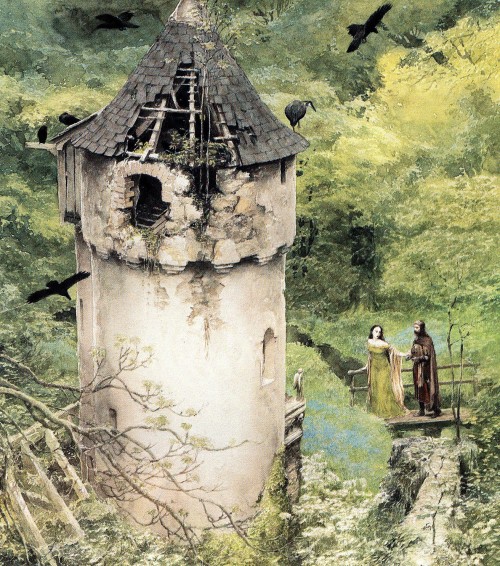
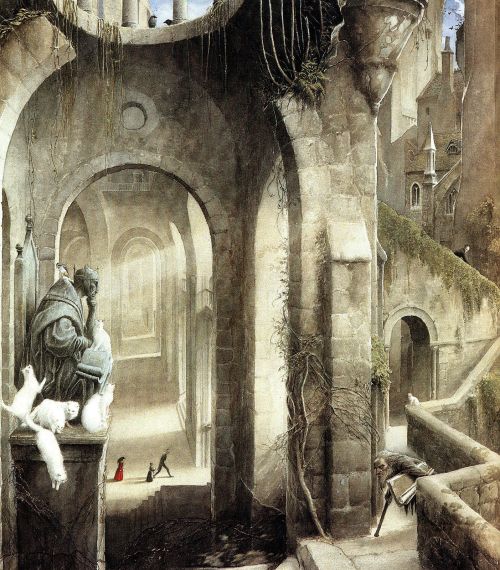



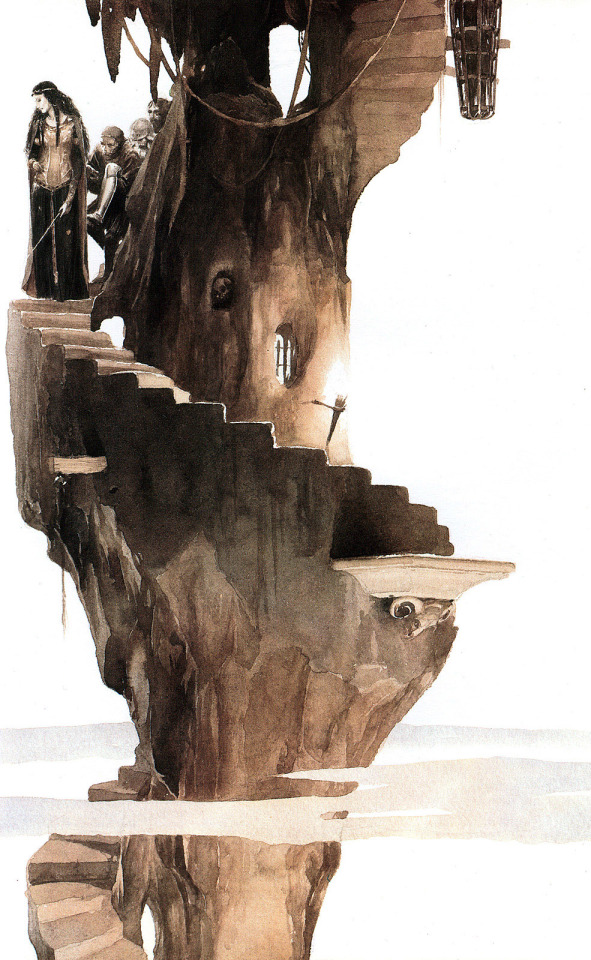
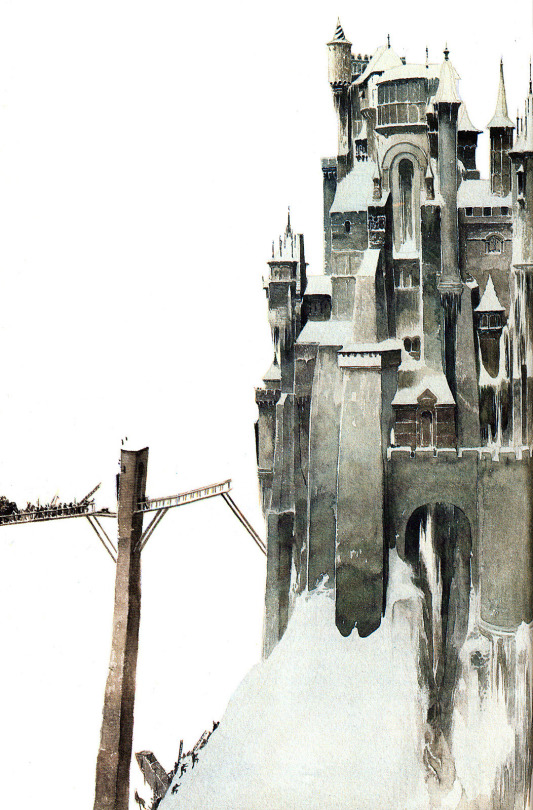
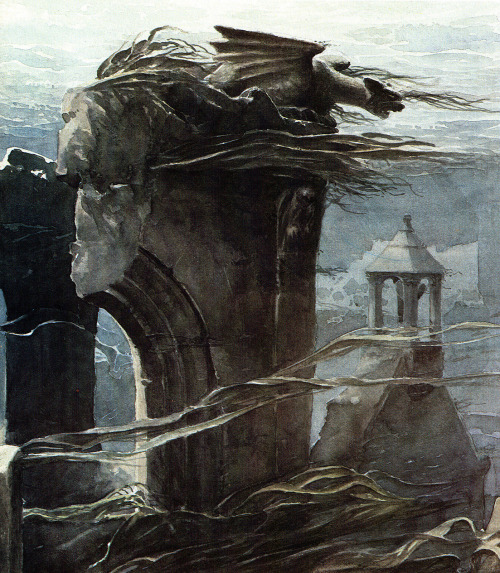
Castles - art by Alan Lee (1984)
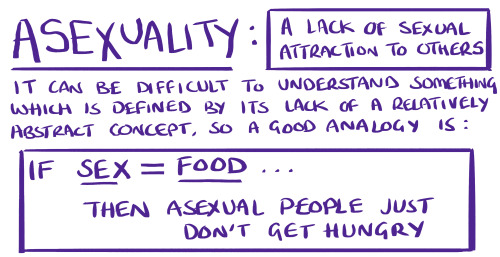
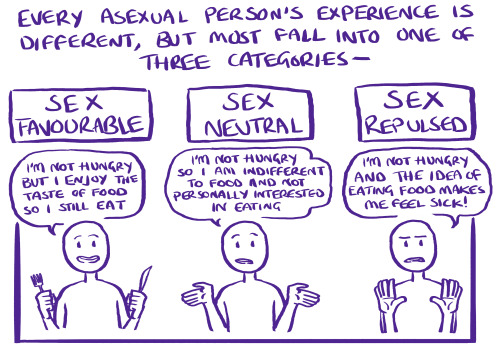


after the huge amazing response I got from my ace!Jiang Cheng comic - all of the ace people saying how amazing it felt to be acknowledged, and all of the people who came to me saying that they hadn’t realised they were ace until they read the comic - I decided I wanted to make something for ace awareness week. it’s not quite as pretty or feelsy as the other comic, but there are so many people even within the LGBT+ community who just… genuinely do not understand asexuality, I figured even something basic would help :)
happy ace awareness week! please remember: everyone’s experience with sexuality is different! be kind and support each other!
-
 enbylvania65000 reblogged this · 4 years ago
enbylvania65000 reblogged this · 4 years ago -
 enbylvania65000 reblogged this · 4 years ago
enbylvania65000 reblogged this · 4 years ago
